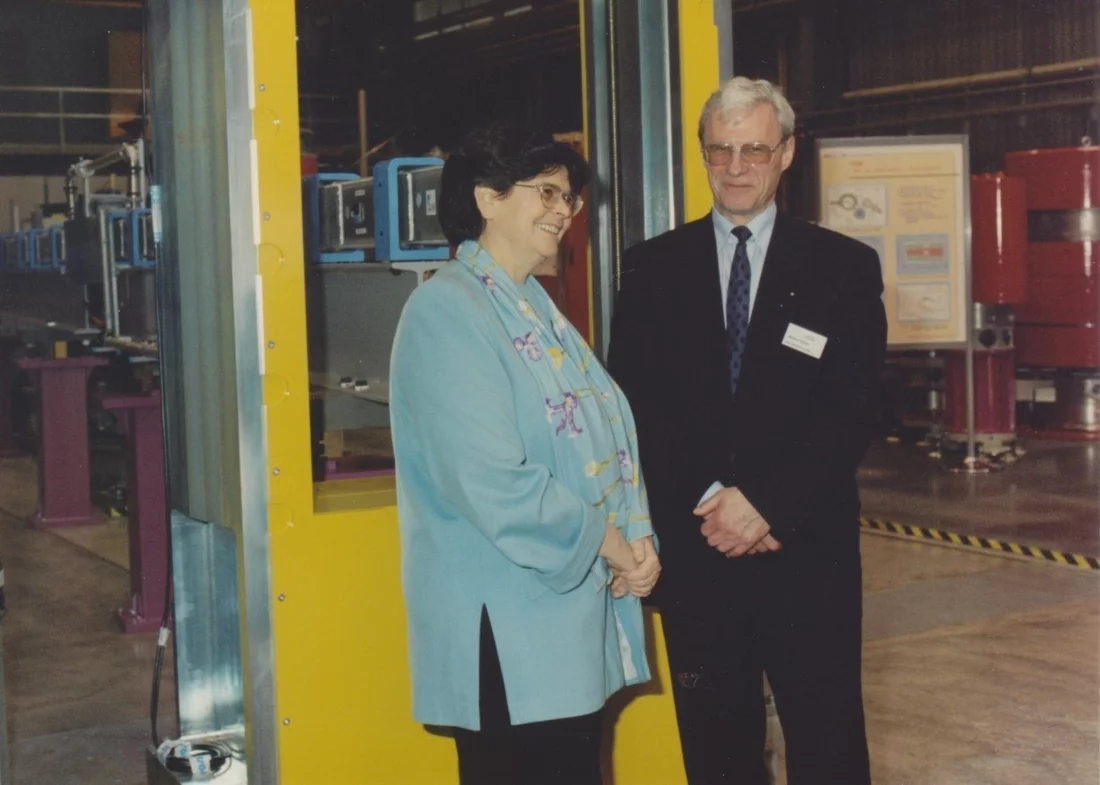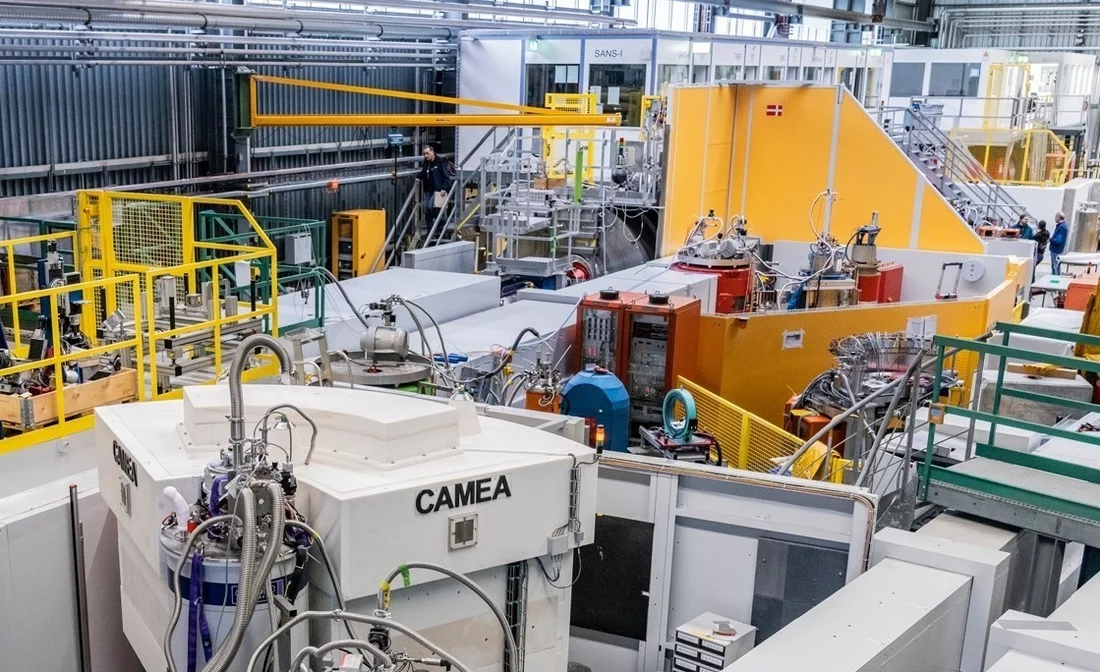On January 17th, 2022, we celebrated the 25th anniversary of the inauguration of the Swiss Spallation Neutron Source SINQ. In his speech, Meinrad Eberle, then director of the Paul Scherer Institute, expressed his satisfaction about the successful completion of the SINQ project, which was achieved thanks to the exemplary efforts of PSI experts in a truly interdisciplinary collaboration. The Federal Councillor Ruth Dreifuss (shown in the picture during her visit of SINQ together with Meinrad Eberle) emphasized the importance of SINQ to strengthen both the Swiss and the European research areas in broad fields of science.
SINQ produced its first neutrons on December 3, 1996. After a test of the beam elements, a proton current of 20 μA was successfully kept on the target for about 10 hours. The next day, the proton current was gradually increased to 900 μA. The measured flux spectrum was significantly higher than calculated, especially for cold neutrons with wavelengths larger than 4 Å, and demonstrated the competitiveness of SINQ with the world-leading neutron sources.
25 years later, SINQ is firmly embedded in the European research landscape and has established itself as an important center for neutron research. Over the years, its infrastructure and scientific instrumentation have continuously evolved to be able to address new scientific challenges: The proton current steadily increased up to 2.5 mA thanks to an ingenious design of the accelerator. Vast improvements of the neutron target and the installation of a new, geometrically improved cold D2 source more than doubled the available neutron flux.
SINQ has contributed significantly to the development of new instrument concepts and neutron techniques. Notable examples are the substantial improvements in neutron imaging through technological developments that have revolutionized the field or the design and construction of the novel multiplexing spectrometer, CAMEA. SINQ has also a long tradition in the utilization of neutron optics, and the SELENE concept with its elliptically focusing guide will significantly improve the experimental capabilities of the time of flight reflectometer AMOR.
SINQ has witnessed a long lasting successful collaboration in the field of neutron spectroscopy with the Danish neutron scattering community. A new cooperation in the area of soft condensed matter and biomaterials with the Laboratoire Léon Brillouin (LLB) will jointly operate a modern small angle neutron scattering instrument. A collaboration agreement with the Institute for Energy Technology (IFE) will grant The Norwegian research community access to SINQ’s instrument suite and will focus on structural studies and materials research.
So far, the last chapter of the success story was written with the commencement of an ambitious upgrade program of SINQ in January 2019, which, despite severe restrictions and difficult working conditions due to the Corona pandemic, was completed in summer 2020 with only 2 month of delay and within the financial budget. The replacement of the old neutron guide system by higher-performance guides with supermirror geometries and coatings tailored to the specific instrument needs resulted in neutron flux gain factors ranging from 2 to more than 10 at the various cold neutron instruments of SINQ.
The reliability and availability of SINQ has been highly appreciated by a growing international user community. Since the start of the user program in July 1998, more than 3000 scientists from all over the world, including more than 1000 PhD students and 700 Postdocs, travelled to SINQ to perform one of the now almost 8000 experiments. Their science covers a broad range of disciplines, from quantum magnetism to cultural heritage, engineering of materials to food science, chemistry to environmental science. The users also appreciate the excellent support of the sample environment group that is essential for so many hard-condensed matter experiments. As an expert commission of the European Union once stated: “Recent scientific highlights resulting from experiments at SINQ are impressive in quality and range of topics covered.” This was indeed a highly gratifying statement!
While there is so much to celebrate in terms of research and innovation from the last 25 years, the decades ahead promise much more to come!
Text: Christof Niedermayer / Paul Scherrer Institut
Contact
Prof. Dr. Christof Niedermayer
Leader Solid State Dynamics, CAMEA
Paul Scherrer Institute
Forschungsstrasse 111
5232 Villigen PSI
Switzerland
Telephone: +41 56 310 20 86
Email: christof.niedermayer@psi.ch
Further Information
SINQ: The Swiss Spallation Neutron Source
Copyright
PSI provides image and/or video material free of charge for media coverage of the content of the above text. Use of this material for other purposes is not permitted. This also includes the transfer of the image and video material into databases as well as sale by third parties.




